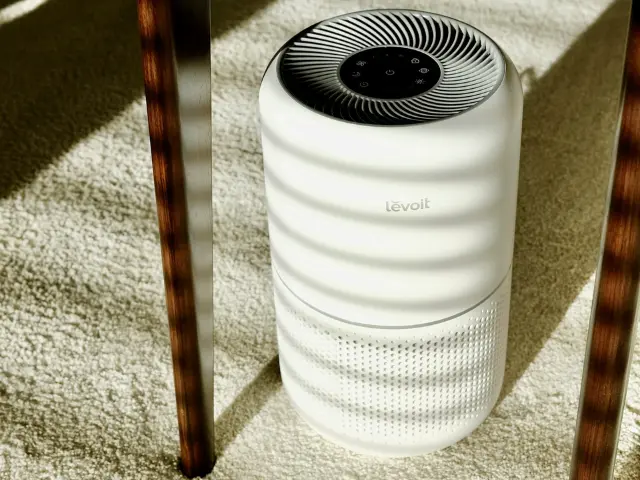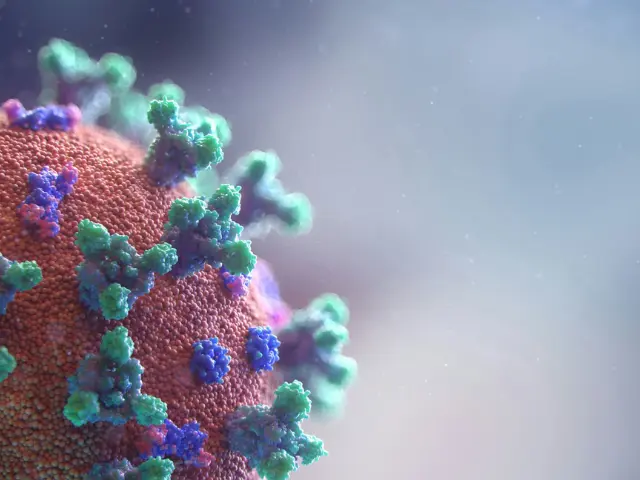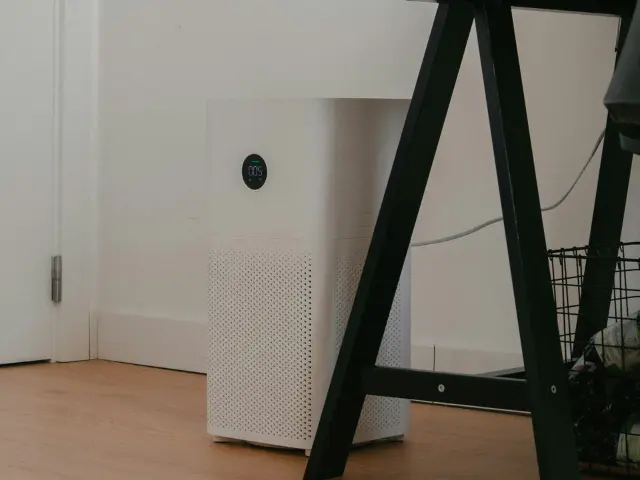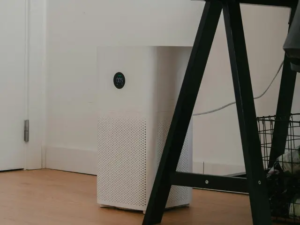We all want fresh and clean air in our homes, especially new parents who have a child to take care of. With pollution, allergens, and even airborne bacteria often swarming the outdoors, coming home to a cleaner atmosphere is essential to how we recharge and take comfort.
Among the many options available, a germicidal UVC air purifier is picking up popularity for its ability to quietly neutralize germs and improve indoor air quality. But what exactly is this technology, and how does it really work? Let’s dive in to find out!
Read here to check out the best UVC air purifiers in the market.

What Are UV-C Air Purifiers?
Historically, there have been many instances where ultraviolet (UV) light has been tapped as a disinfectant. In particular, we’ve previously seen how UV was used to rid pollutants in water systems, air, and surfaces.
UV-C air purifiers, for their part, are air-cleaning devices that use UV light technology to target and destroy microorganisms like bacteria, viruses, and mold spores. In the market, these are usually sold as freestanding devices or as systems integrated into pre-existing residential or commercial HVAC units.
How Do UV-C Air Purifiers Work?
When air passes through these purifiers, the UV-C light disrupts the DNA of harmful microorganisms, making them inactive and unable to cause harm. This process of using UV-C to kill viruses and bacteria is called ultraviolet germicidal irradiation (UGVI).
What Is UGVI?
UGVI is the method of using ultraviolet (UV) light to disinfect and sterilize air, surfaces, or water by destroying the DNA or RNA of microorganisms such as bacteria, viruses, and fungi. It specifically uses UV-C light, which is a short-wavelength ultraviolet light (typically 100 to 280 nm) that is invisible to the naked eye but is proven highly effective at killing pathogens.
Common UV-C Technology Enabled Devices
-
Air purifier
-
UV lamps
-
UV light boxes
-
HVAC UV-C light systems
-
UV-C surface treatment devices
For a list of approved best UV light filter, click here.
These efficient germ-killing abilities made UV-C air purification a staple in modern homes and offices. To make systems more effective, many UV-C purifiers come with additional filtration systems such as HEPA filters, which can eliminate dust particles, pet dander, and allergens in the atmosphere.

Do UV-C Air Purifiers Work?
Yes, UV-C air purifiers are effective [1], especially when it comes to neutralizing certain airborne bacteria.
Do UV Lights Clean the Air?
The short answer is yes but with a catch.
UV-C lights can disinfect the air passing through them by killing microorganisms, but they don’t “clean” the air in the way a filter does. Therefore, a HEPA filtration system is usually also deployed to remove chemical fumes, smoke, and other airborne particles, and provide a complete air-cleaning solution.
What Is the UV-C Button on Air Purifier?
That conspicuous UV-C button on UV air purifiers is typically the trigger that activates the germ-killing power of UV-C light. When pressed, the UV-C light inside the unit starts working alongside the air filters or HEPA filters to eliminate harmful microorganisms from the atmosphere. Depending on the model, the UV-C can also be controlled remotely.
Is UV-C Filter Safe?
Yes, UV-C air purifiers are safe as long as they do not generate ozone, and as long as direct and prolonged exposure to ultraviolet light are avoided.
Notably, UV-C disinfection has been used for many years in varying clinical settings and applications, including purification of drinking water [2] and indoor air disinfection. There are also air purifiers that are designed for babies, which also account for the white noise produced by these devices [3].

Improve Indoor Air Quality With UV-C Technology
UV-C air purifiers offer a simple and effective way to protect your family from airborne pathogens and improve indoor air quality [4]. As a matter of fact, their ability to neutralize harmful microorganisms makes them complementary to a holistic parenting style.
With that said, we recommend a UV-C purifier that’s also boosted by other filtration technologies such as a ULPA or true HEPA filter, which can trap dust and eliminate other microparticles. With this layered approach, you’re guaranteed to enjoy far better and lasting enhanced air quality in your home.
Resources:
[1] Yang and Wu. Effectiveness of an ultraviolet-C disinfection system for reduction of healthcare-associated pathogens. Journal of Microbiology, Immunology, and Infection. Volume 52, Issue 3, Pages 487-493 (June 2019).
[2] Kim and Yun. Impact of UV-C Irradiation on Bacterial Disinfection in a Drinking Water Purification System. J Microbiol Biotechnol. 2023 Jan 28; 33(1): 106–113.
[3] Hugh SC, Wolter NE, Propst EJ, Gordon KA, Cushing SL, Papsin BC. Infant sleep machines and hazardous sound pressure levels. Pediatrics. 2014;133(4):677-681. doi: 10.1542/peds.2013-3617.
[4] Vijayan V, Paramesh H, Salvi S, Dalal AK. Enhancing indoor air quality –The air filter advantage. Lung India. 2015;32(5):473. doi: 10.4103/0970-2113.164174







